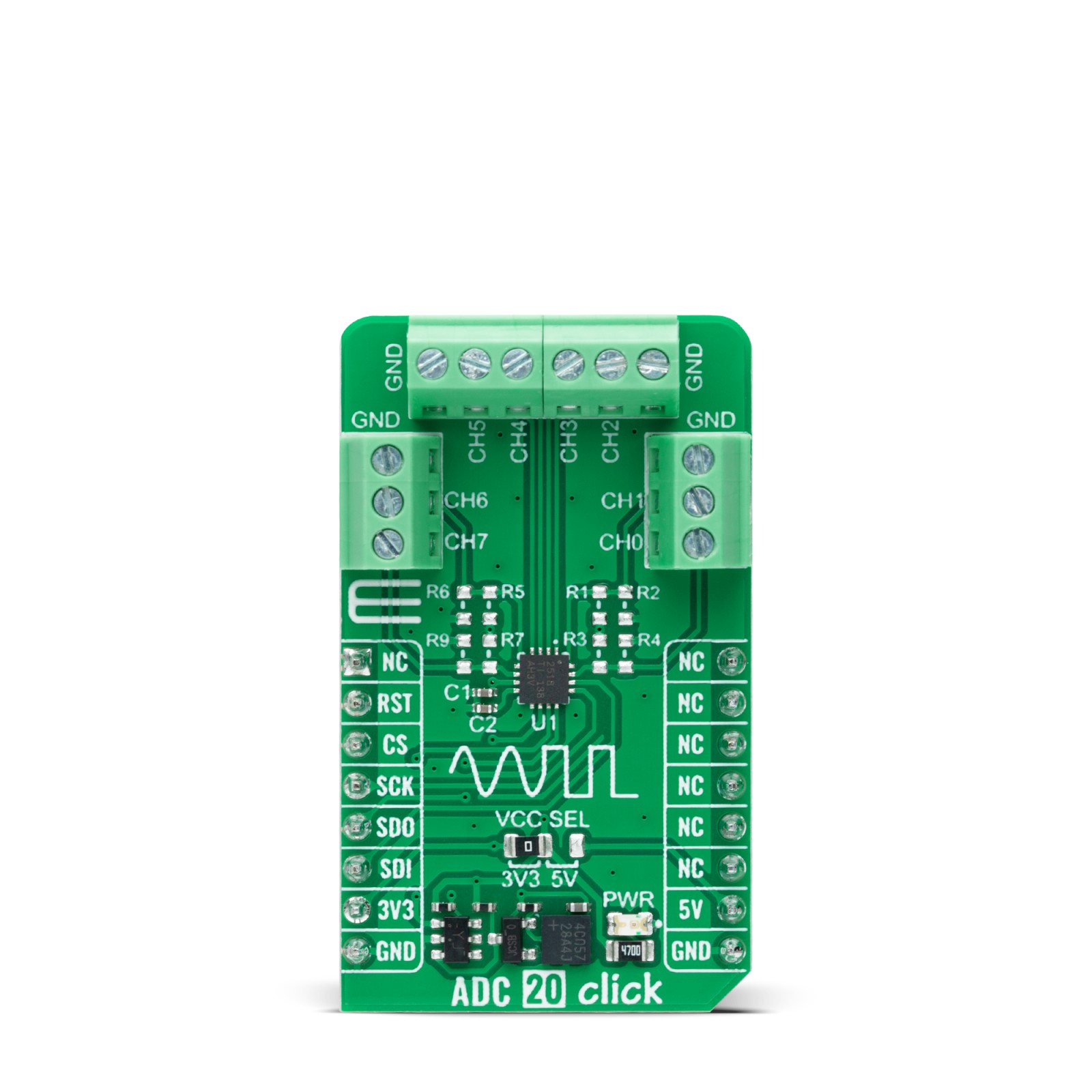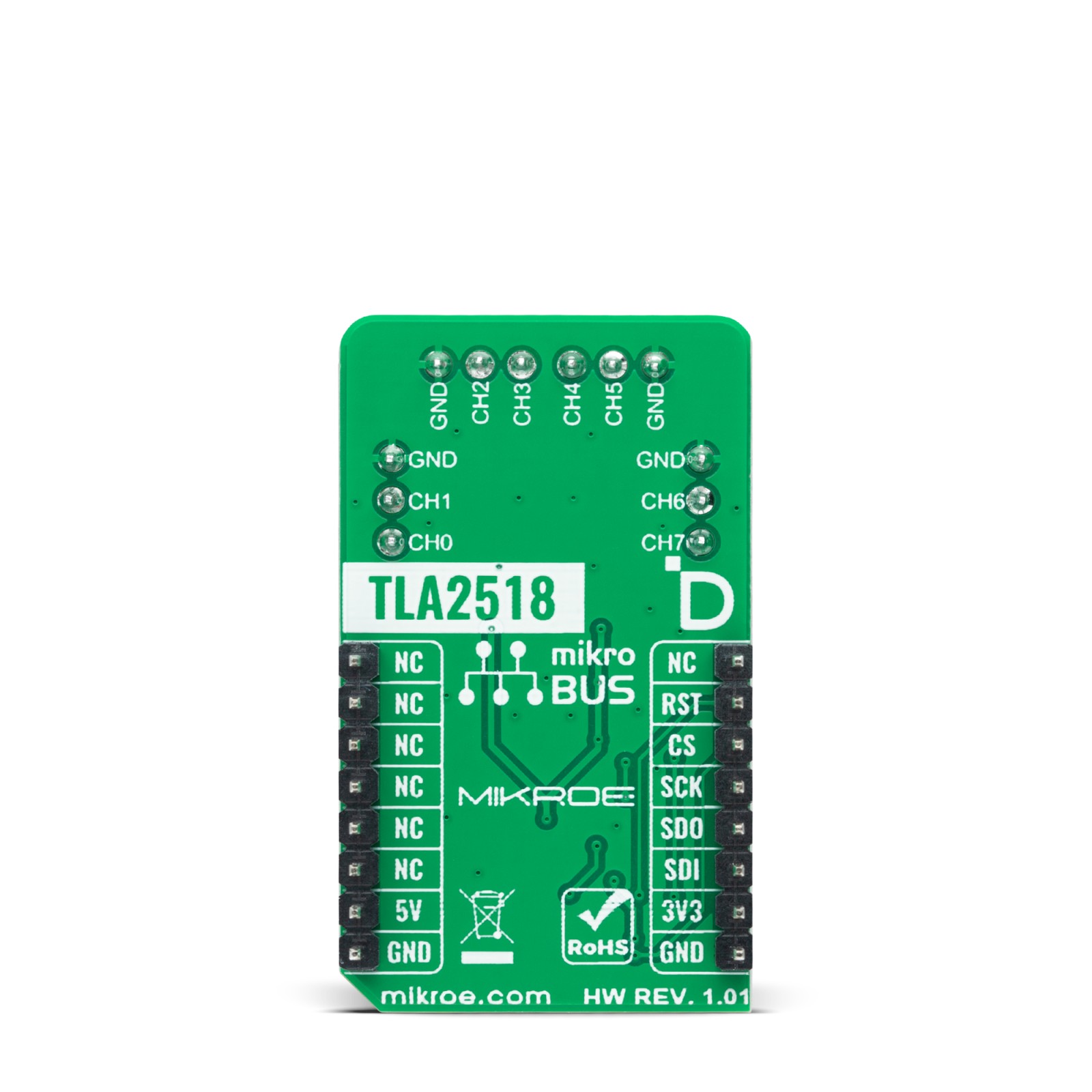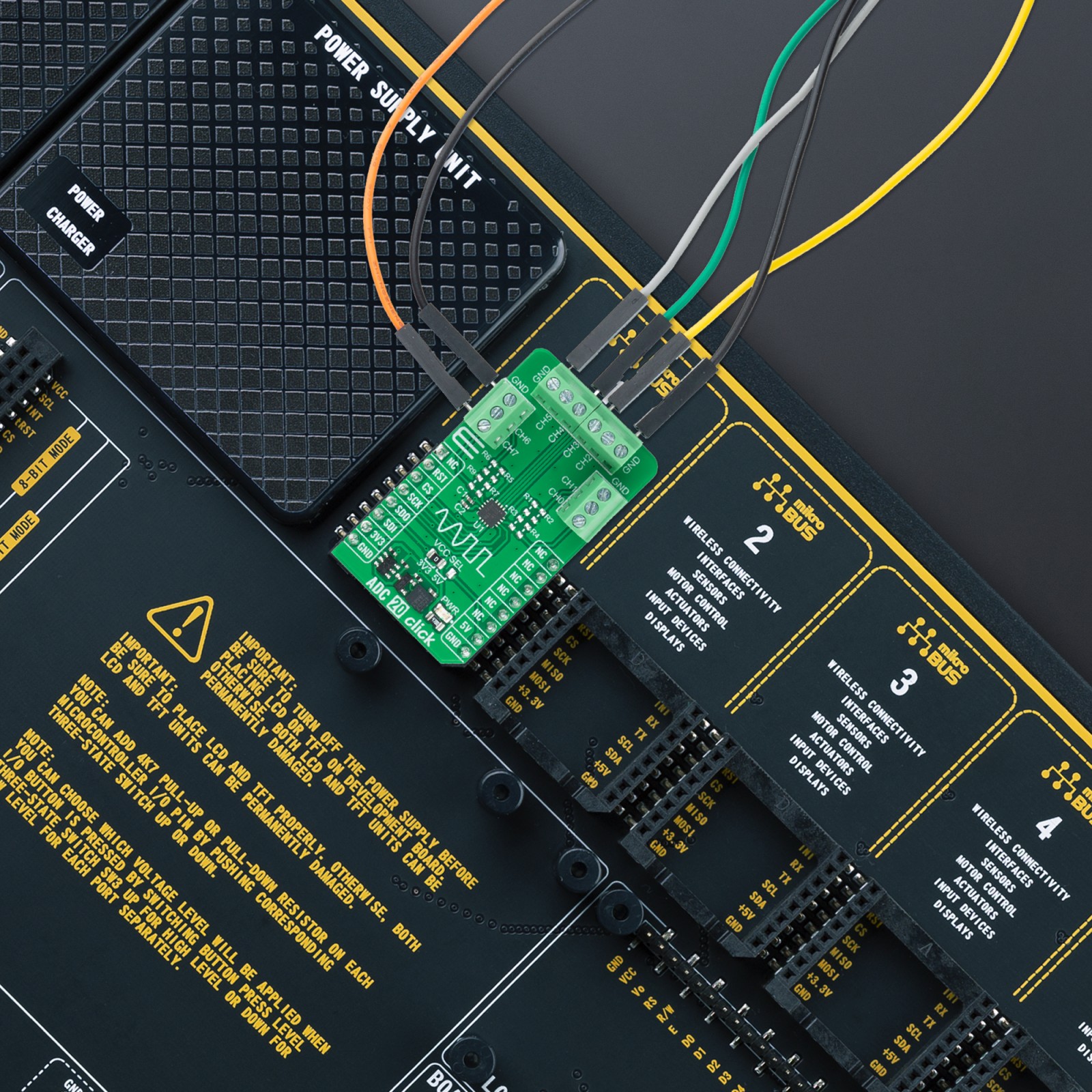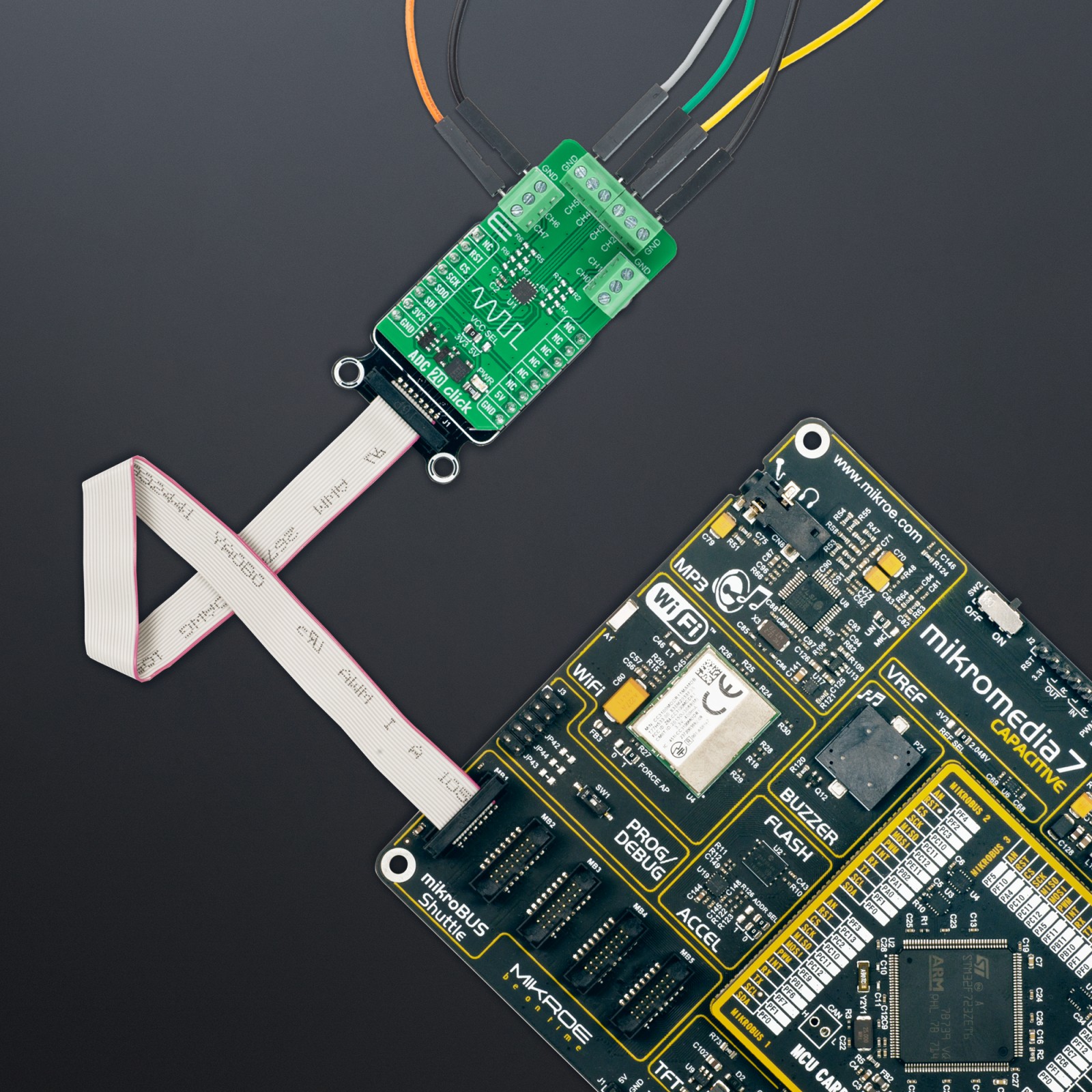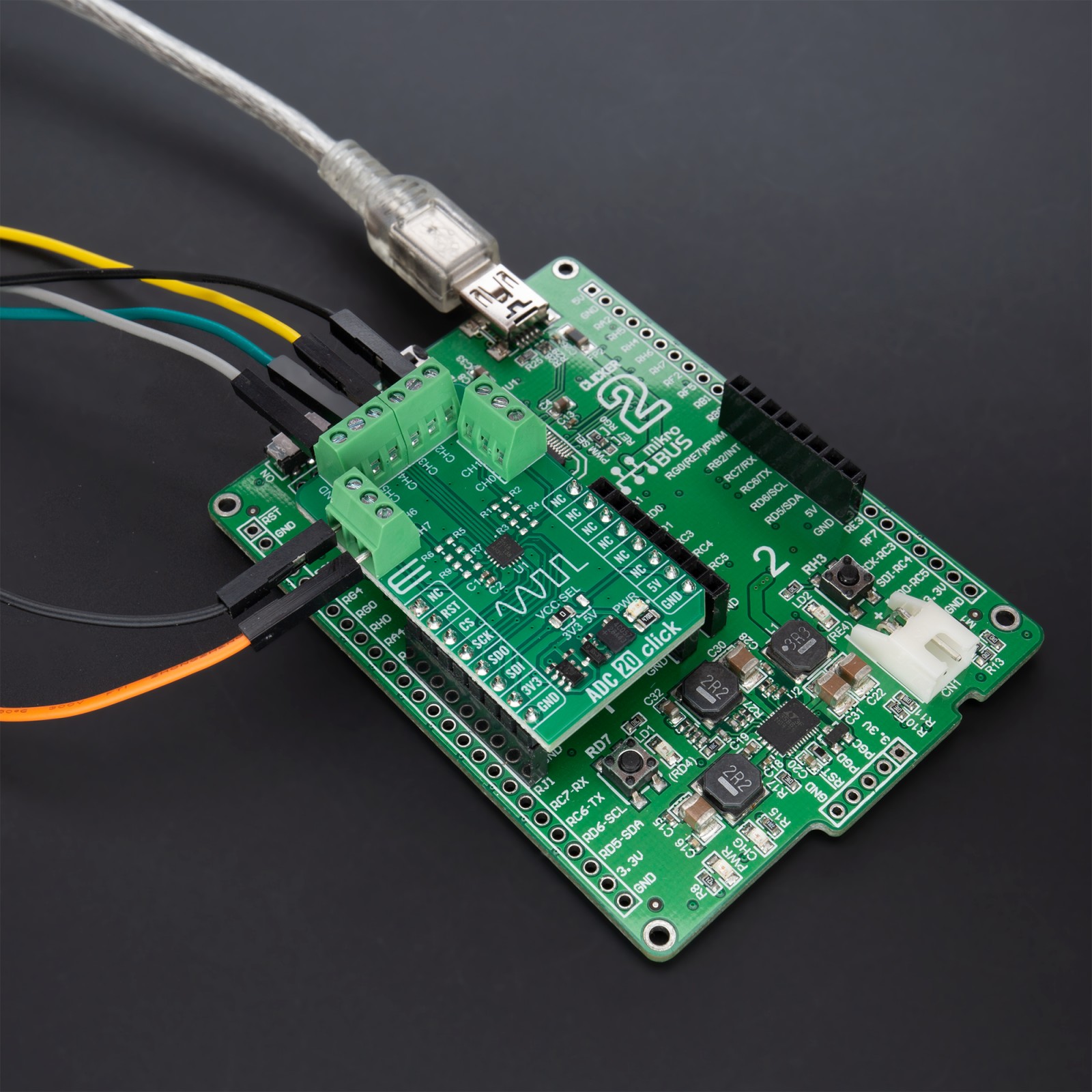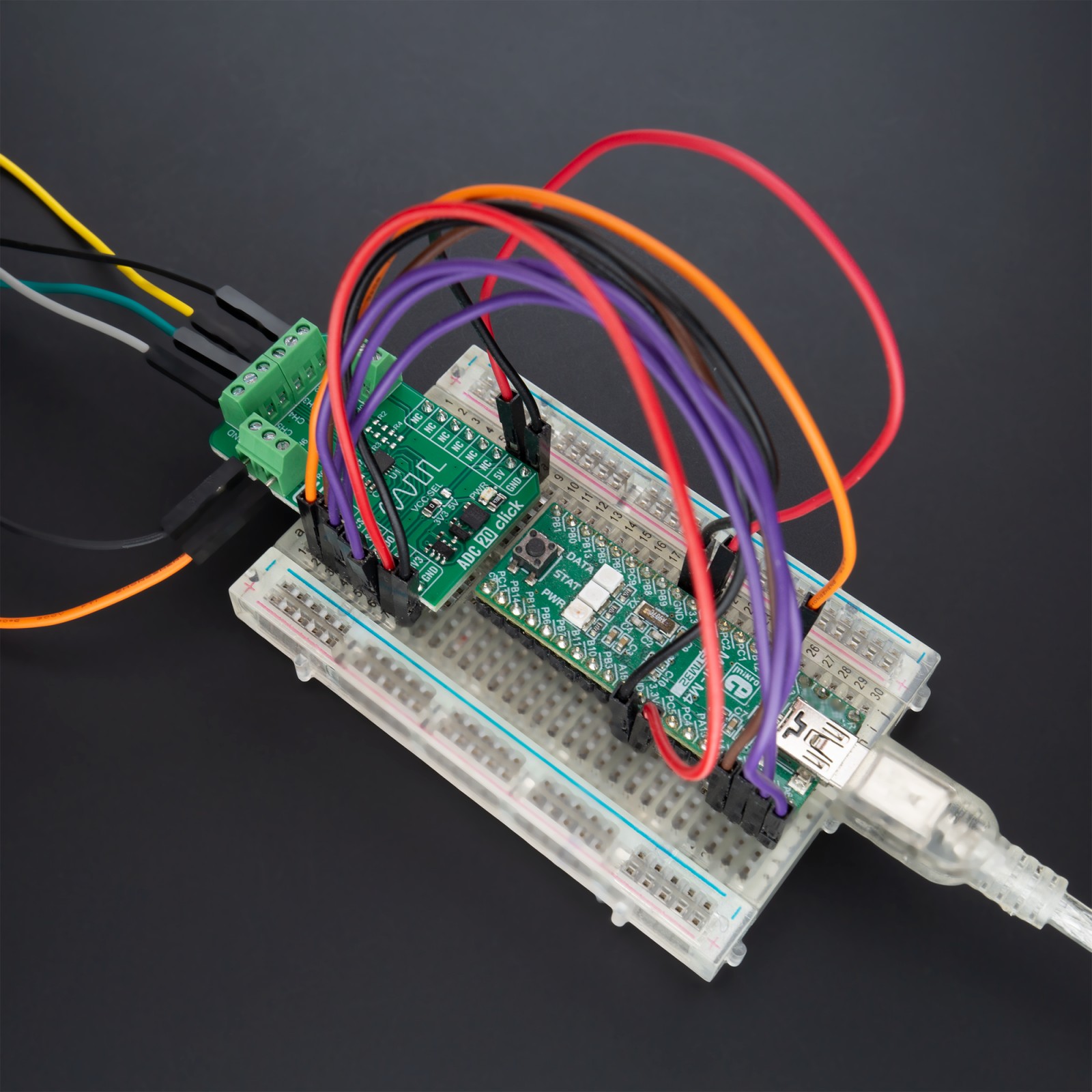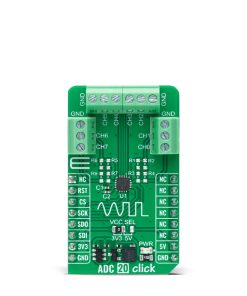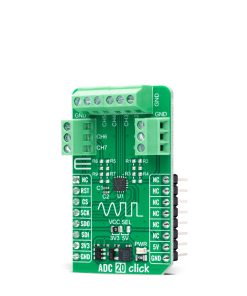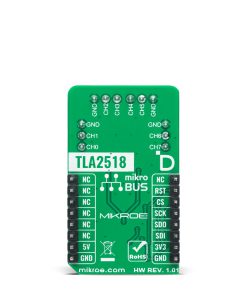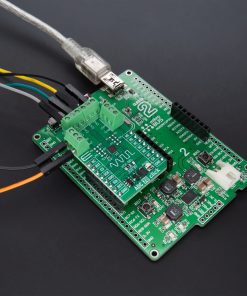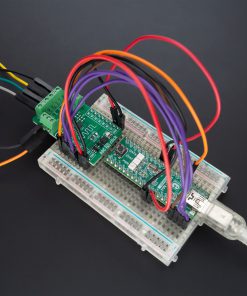Subtotal: R330.00
ADC 20 Click
R460.00 ex. VAT
ADC 20 Click is a compact add-on board with a high-performance data converter. This board features the TLA2518, an SPI-configurable eight-channel 12-bit successive approximation register analog-to-digital converter (SAR ADC) from Texas Instruments. The TLA2518 has an internal oscillator for the ADC conversion and supports averaging multiple data samples with a single conversion start. Also, the built-in programmable averaging filters help reduce noise from the analog inputs and reduce the number of data samples required to be read by the host MCU. All eight channels can be used as analog inputs, with the addition that the four channels can be used as digital inputs or digital outputs. This Click board™ offers high accuracy for the most demanding applications, from general-purpose remote data acquisition to industrial applications.
ADC 20 Click is fully compatible with the mikroBUS™ socket and can be used on any host system supporting the mikroBUS™ standard. It comes with the mikroSDK open-source libraries, offering unparalleled flexibility for evaluation and customization. What sets this Click board™ apart is the groundbreaking ClickID feature, enabling your host system to seamlessly and automatically detect and identify this add-on board.
Stock: Lead-time applicable.
| 5+ | R437.00 |
| 10+ | R414.00 |
| 15+ | R391.00 |
| 20+ | R376.28 |

 METHANE Click
METHANE Click 